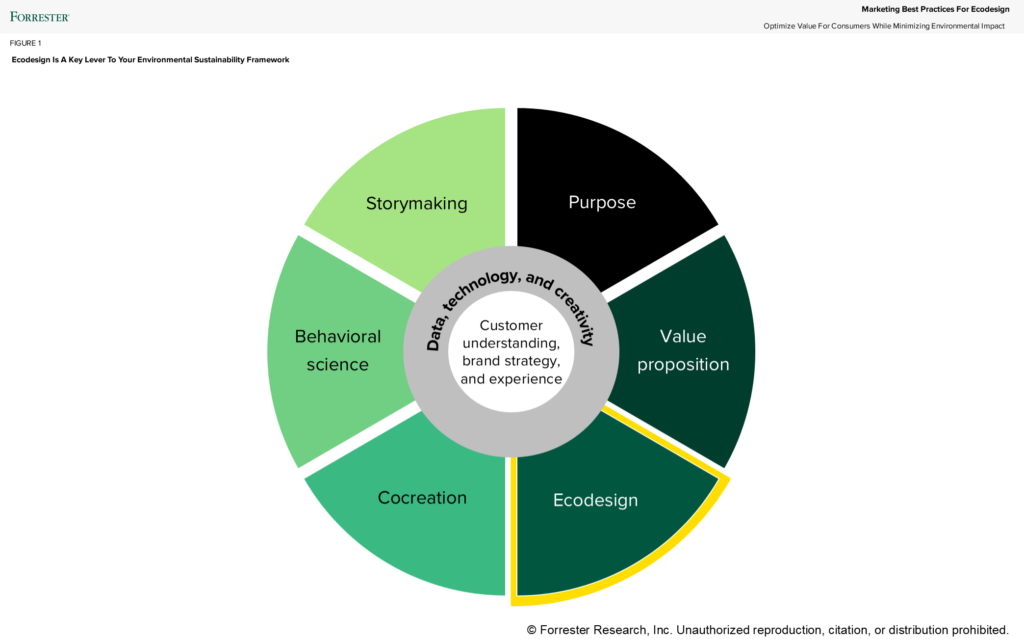Marketing Best Practices For Ecodesign
Ecodesign is a continuous improvement process that aims at balancing trade-offs between minimizing environmental impact and optimizing value for customers. It’s an opportunity to rethink your value chain to reduce costs and innovate for increasingly demanding green consumers and regulators.
Ecodesign is one of the six pillars of The B2C CMO’s Environmental Sustainability Framework.

More than 80% of a product’s environmental impact is determined at the design stage. A growing number of companies are starting to balance cost, process, and time-to-delivery optimization with the reduction of their negative environmental footprint before moving into mass production.
Beyond regulation and the EU’s Ecodesign for Sustainable Products Regulation, key forces are driving the uptake of ecodesign:
- Consumers want more brand transparency. According to Forrester data, only 10% of US and 12% of European consumers say that the environmental impact of a brand or a product is most important when making a purchase — but 43% of US and more than 50% of Spanish and Italian online consumers would like to understand more about how their purchases impact the environment. In addition, 62% of German and half of Australian online consumers report owning or regularly purchasing sustainable food products. Consumers are also increasingly aware of planned obsolescence of consumer electronics and demand more transparency. NGOs are increasingly scrutinizing companies’ green claims and use of resources.
- Leaders such as Decathlon, IKEA, and L’Oréal capitalize on sustainability as a differentiator. Sourcing more sustainable materials and producing more sustainable goods is often perceived as expensive, but it also represents a way to differentiate and justify a green premium for your products as well as an opportunity to reduce costs by limiting resource and energy consumption.
According to Forrester’s Q1 2025 CMO Pulse Survey, 83% of B2C marketing and advertising decision-makers (at the VP level or higher) agree that their organization struggles to design greener offerings, products, and services. B2C marketers find it difficult to embrace ecodesign because they deal with many other priorities, pay attention to media and communication impacts (but neglect the rest), and overfocus on recycled packaging and forget about the lifecycle impact of products. They also miss a more holistic approach and struggle with cross-functional complexity.
As Geraldine Hue, cofounder at MAOBI, a sustainable consultancy, sums it up: “Too few CMOs are involved in ecodesign, and that’s a pity because — whether they own the product or not — they play a key role in aligning teams to conceive more sustainable offerings.”
Ecodesign demands strong involvement and enterprisewide collaboration. This new report shares best practices for maturing your ecodesign approach to help consumers embrace greener behaviors. If you are a Forrester client, you can access the full report here.
Also, as a client, you can schedule time with me for an inquiry or guidance session, or you can talk to your account team about workshops and strategy days on how to integrate sustainability into your marketing and how to activate it in customer journeys. Go to my Forrester bio and click “Follow” to be notified about my latest research. You can also follow me on LinkedIn here.
